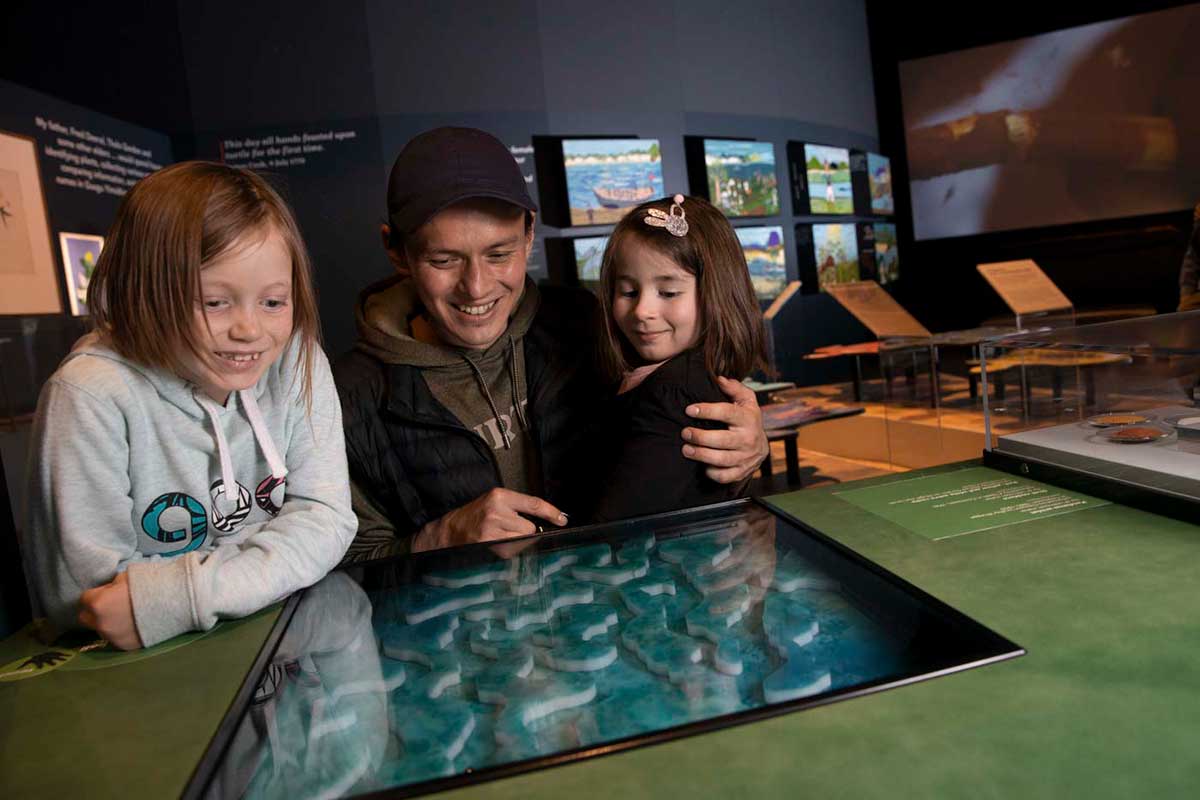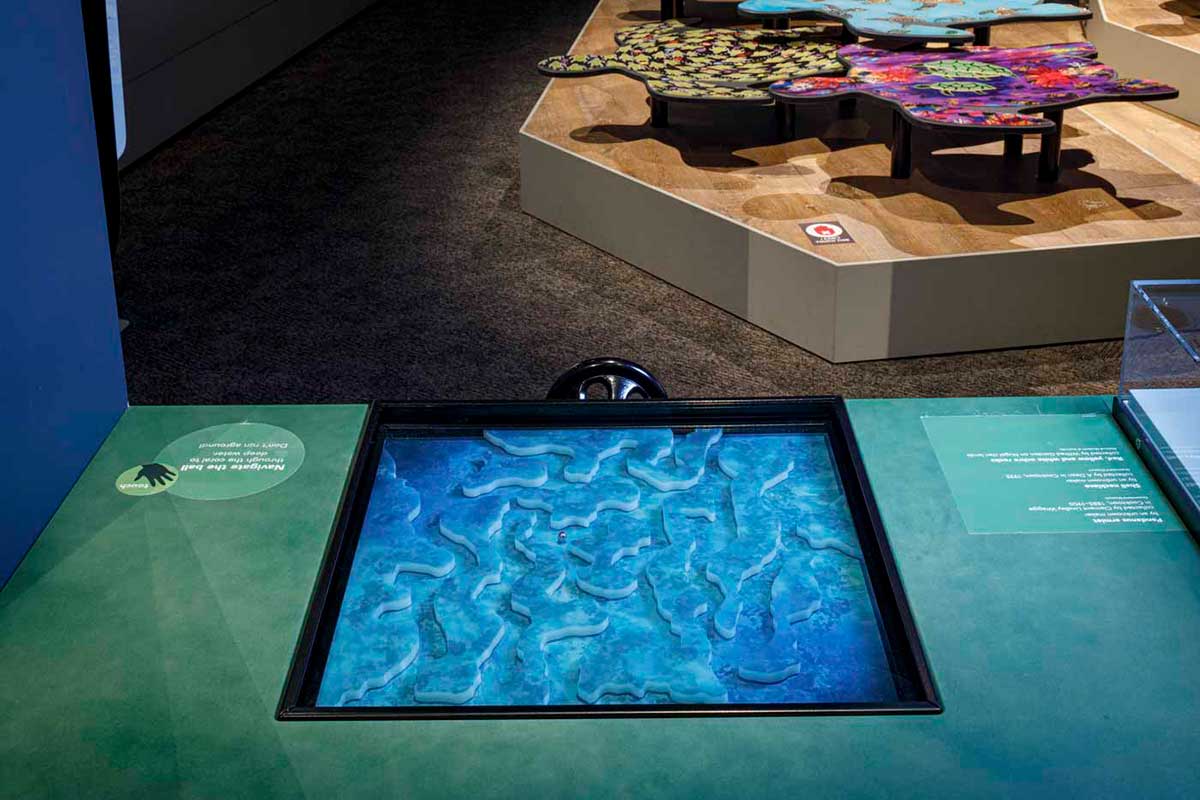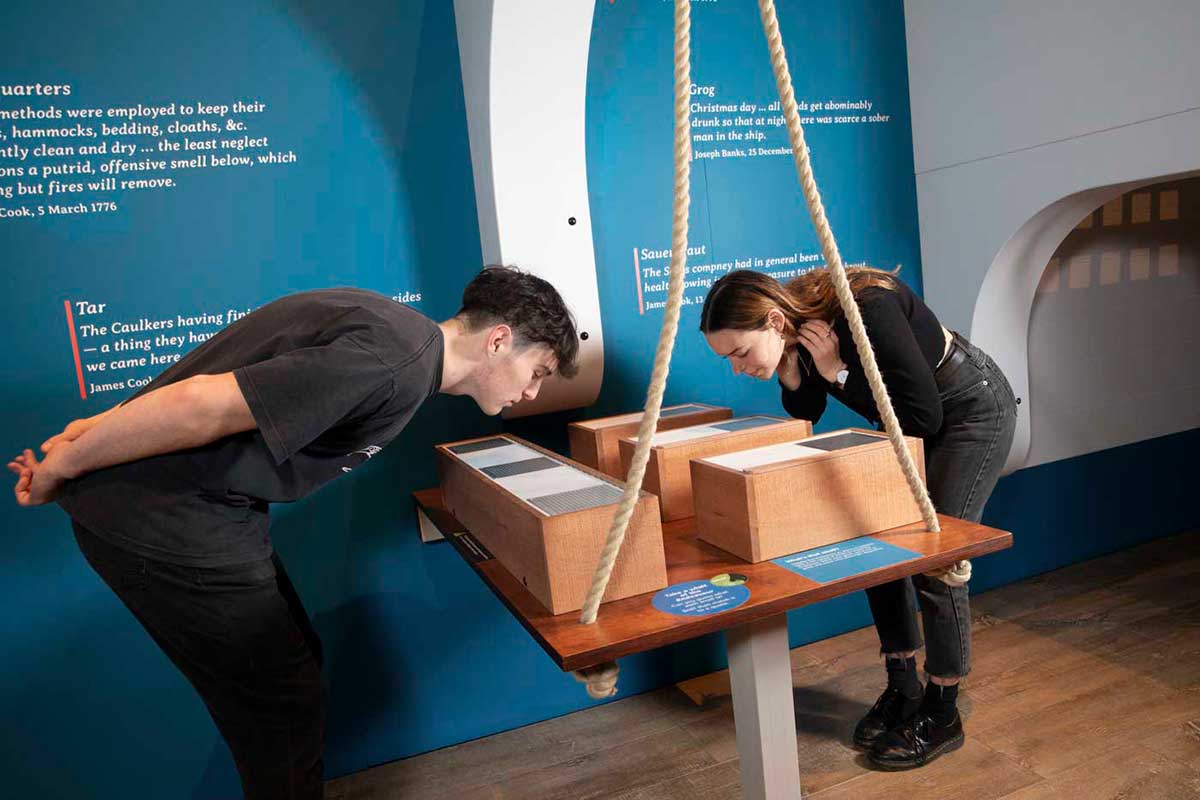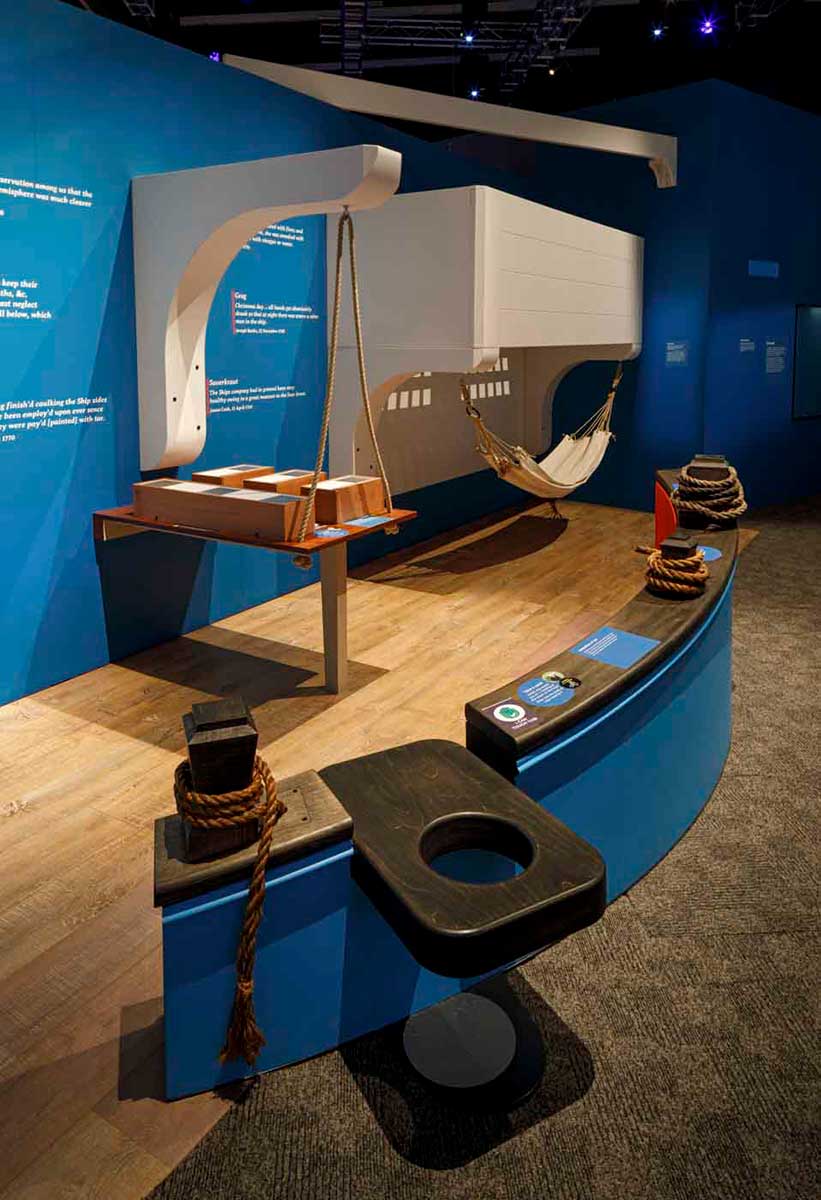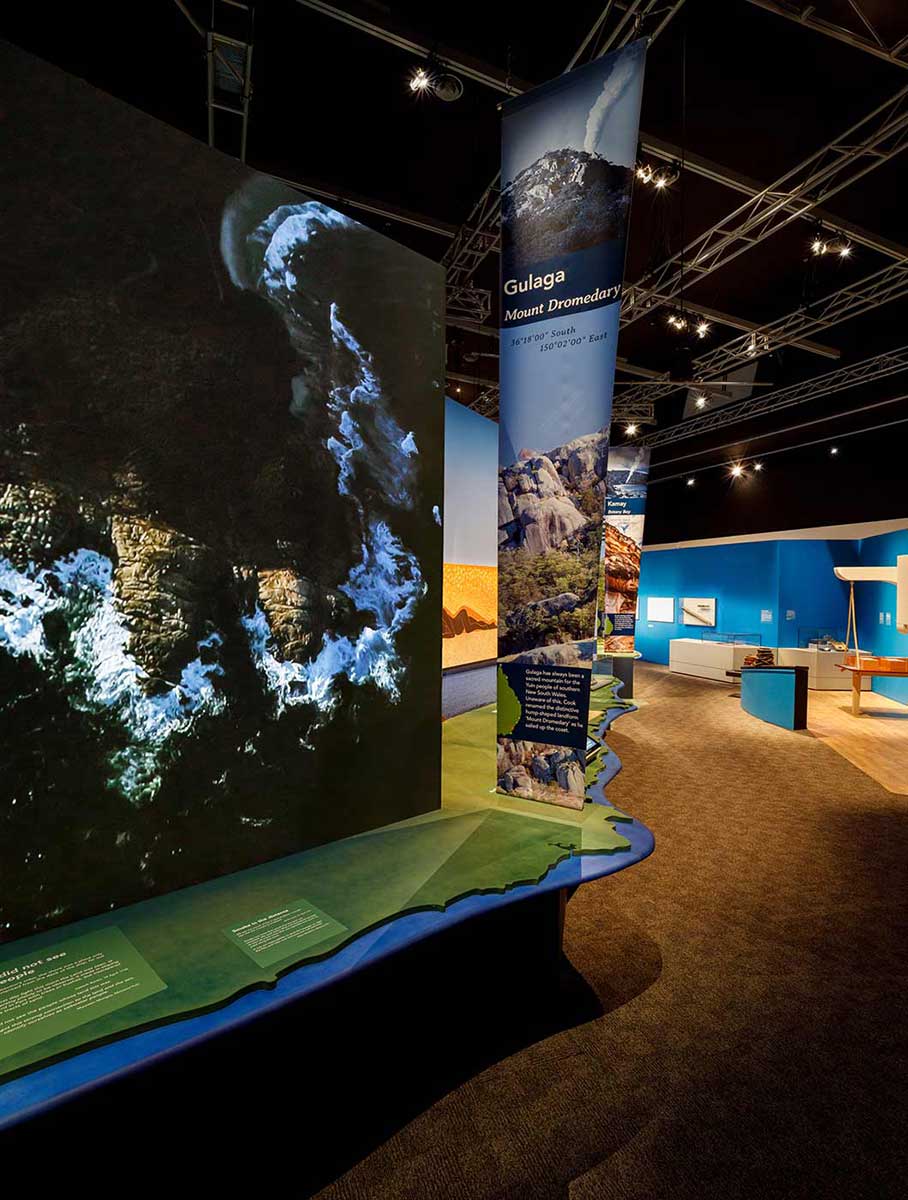Endeavour Voyage: The Untold Story of Cook and the First Australians presents the history of the 1770 voyage and its reception in Australian and beyond, from the perspectives of the shore and the ship.
Based on audience research and feedback from earlier Museum exhibitions, we resolved to provide visitors with opportunities for participation and multi-sensory engagement by creating a range of contemporary and sometimes playful interpretive devices.
We designed these to meet the expectations and needs of a wide range of visitors and audience types. The exhibition’s digital experiences particularly appeal to family groups, younger audiences and those who appreciate new media experiences.
Physical interactives encourage different modes of engagement with exhibition content and cater to a spectrum of learning levels.
A journey on the ship
The interpretive strategy of the first part of the exhibition evoked different parts of the journey: the ship, the sea, coastline, land and sky. Visitors go on their own journey in the space, and embody the two perspectives of the ship and the shore.
The ‘ship’ areas are signalled by wooden floorboards on the ground. Visitors step ‘aboard’ and find some of the more visceral aspects of living within the ship’s cramped confines.
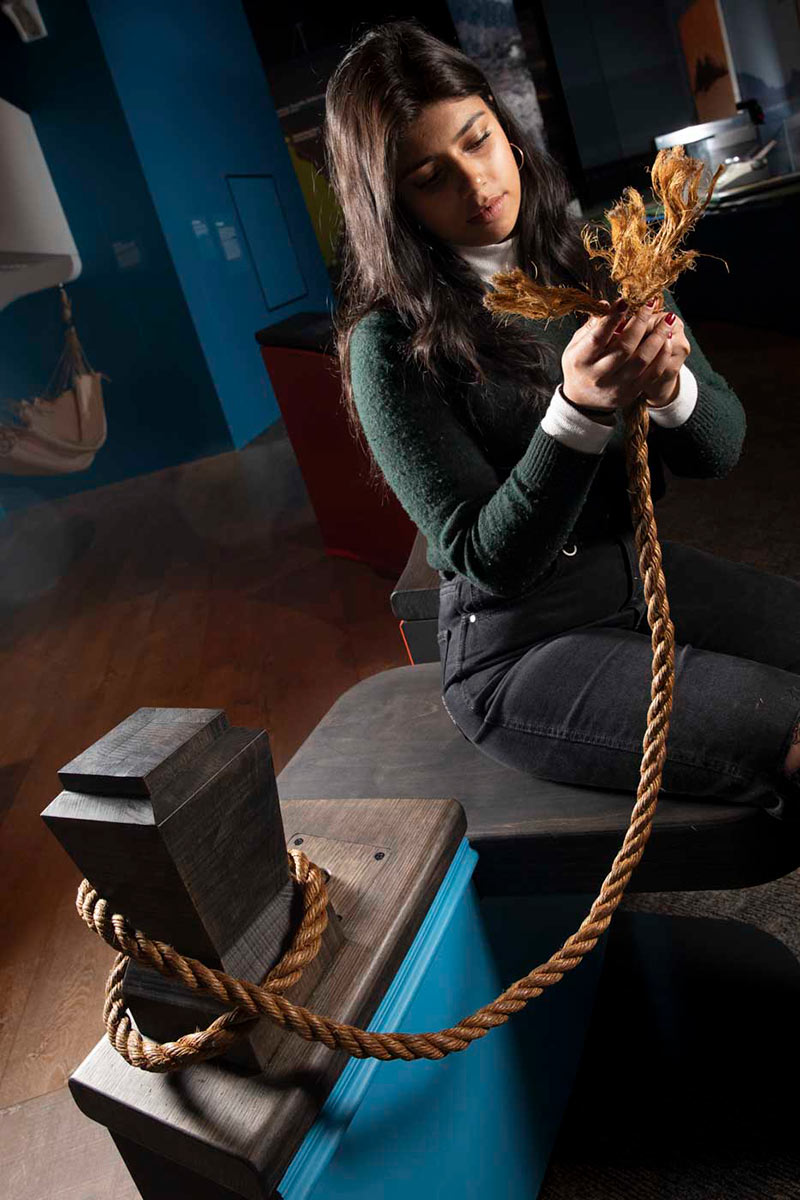
Visitors can imagine sleeping in a hammock and try out a seat of ease (also known as a sailor’s toilet). They can sniff a variety of aromas prevailing on board – from the bracing sea air to the Admiralty food staple, sauerkraut, to more putrid stenches arising from close-quarters living.
Learning the ropes
Ropes are vital to a ship’s operation and the Endeavour’s sailors spent much of their time mending them. Ropes were made of hemp and there were two main types: hawser-laid, with three rope strands in the twist, and cable-laid, a thicker rope twisting three hawser-laid ropes together. Cable-laid ropes were coated with tar.
In the exhibition, visitors can look closely at different types of ropes, similar to the type which would have been used on board the Endeavour. These sample ropes were generously given to us by staff from the Australian National Maritime Museum workshop.
Sounding the depths
In collaboration with Unison Sound, we created a dramatic rendition of the terrifying night when the Endeavour hit a coral reef and nearly sank. It recreates journal entries recorded by Cook, Joseph Banks and Sydney Parkinson from 11 to 14 June 1770.
Allied to this audio experience is a pinball-style game. Players guide a ball through a maze to evoke the crew’s experience of steering the ship through the perilous waters of the Great Barrier Reef.
Play in museums
All interactives in Endeavour Voyage are clearly flagged with labels containing short, clear text and icons indicating that the visitor can touch, listen or smell. Rendered in green, a colour universally associated with ‘go’, these icons encourage the visitor to engage in spaces where they might otherwise feel restrained from doing so.
Safety during the pandemic
All the Endeavour Voyage interactives were developed and produced before Covid-19 arrived in Australia. As the reality of the pandemic became clear we had to re-evaluate the whole exhibition. How close could visitors be? What surfaces did they have to touch? How should we clean everything? How could we adapt experiences to be touchless?
Together with our front of house team and the Museum’s Covid-safe taskforce, we:
- increased cleaning of surfaces and put hand sanitation stations throughout
- changed instructions from ‘touch’ to ‘look carefully’ – there’s a lot to be learnt by observing something closely
- provided alternative access to information, including publishing more exhibition content online.
In our collection


